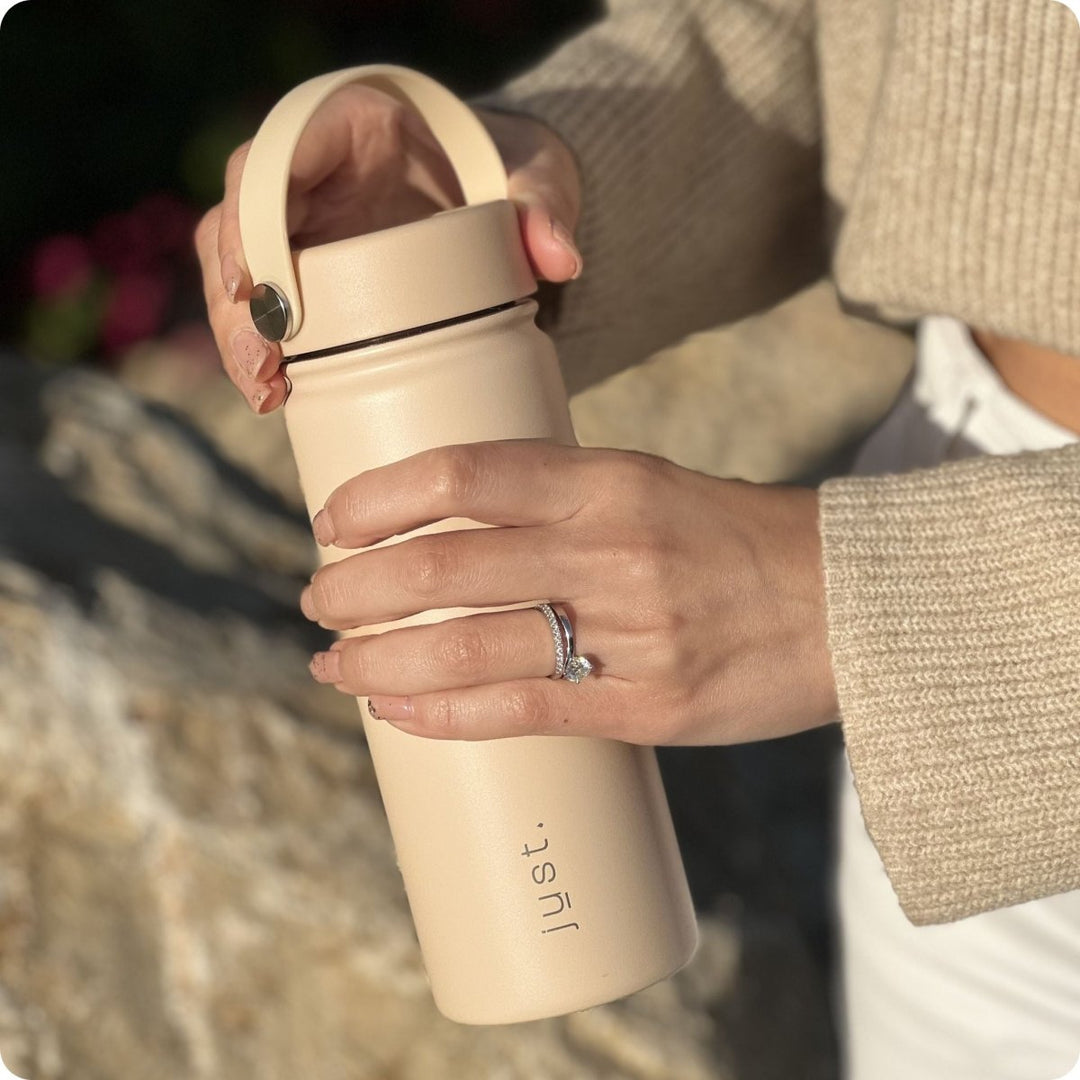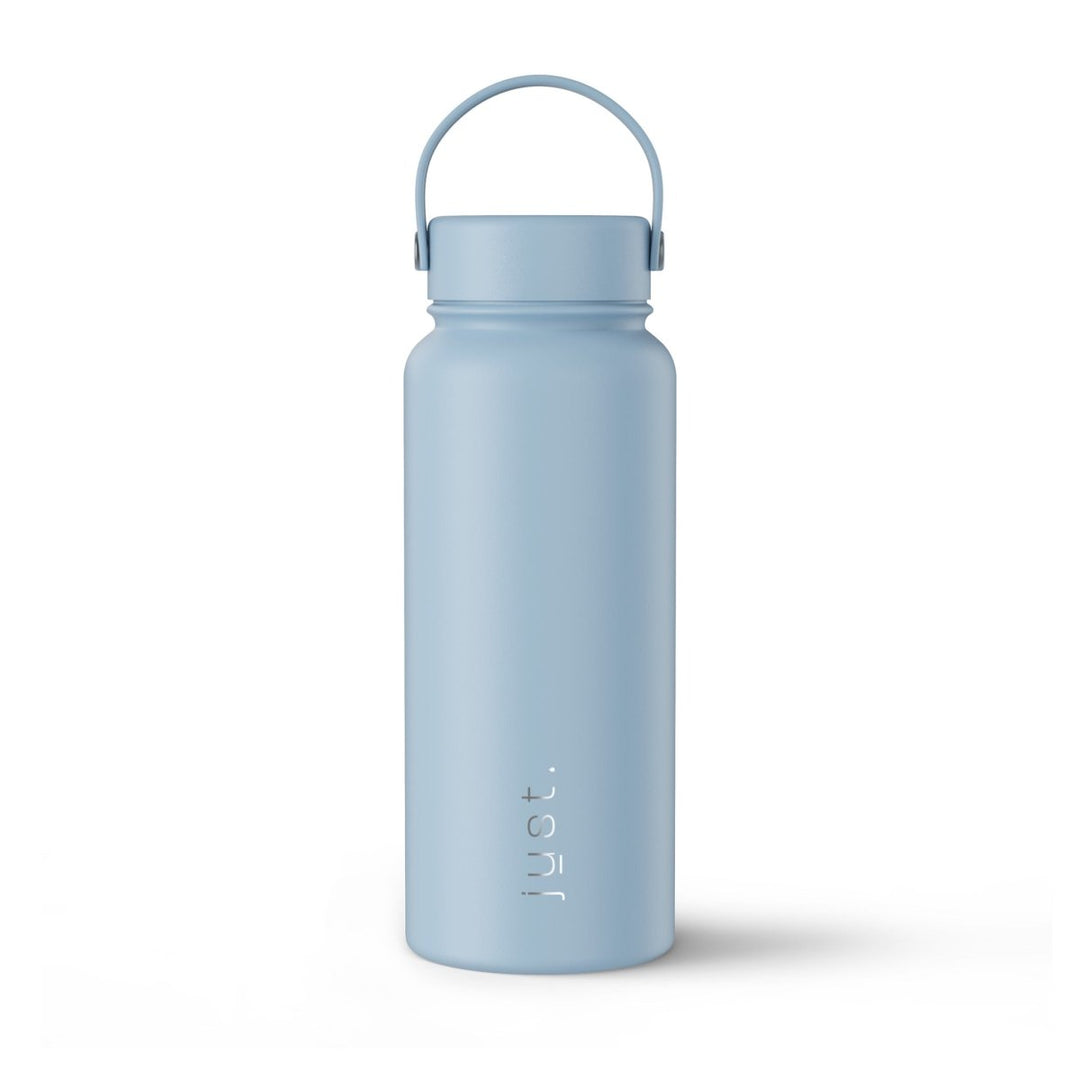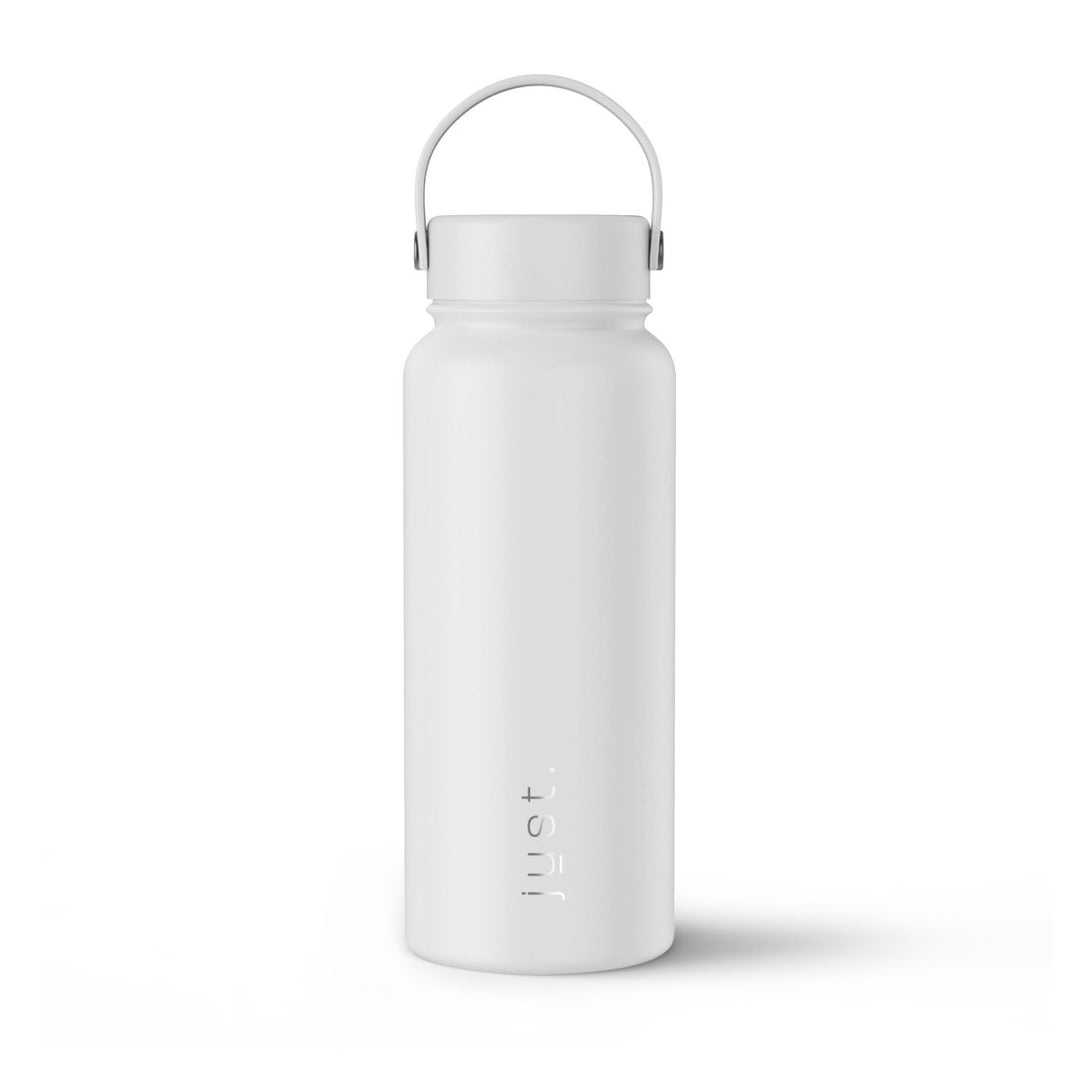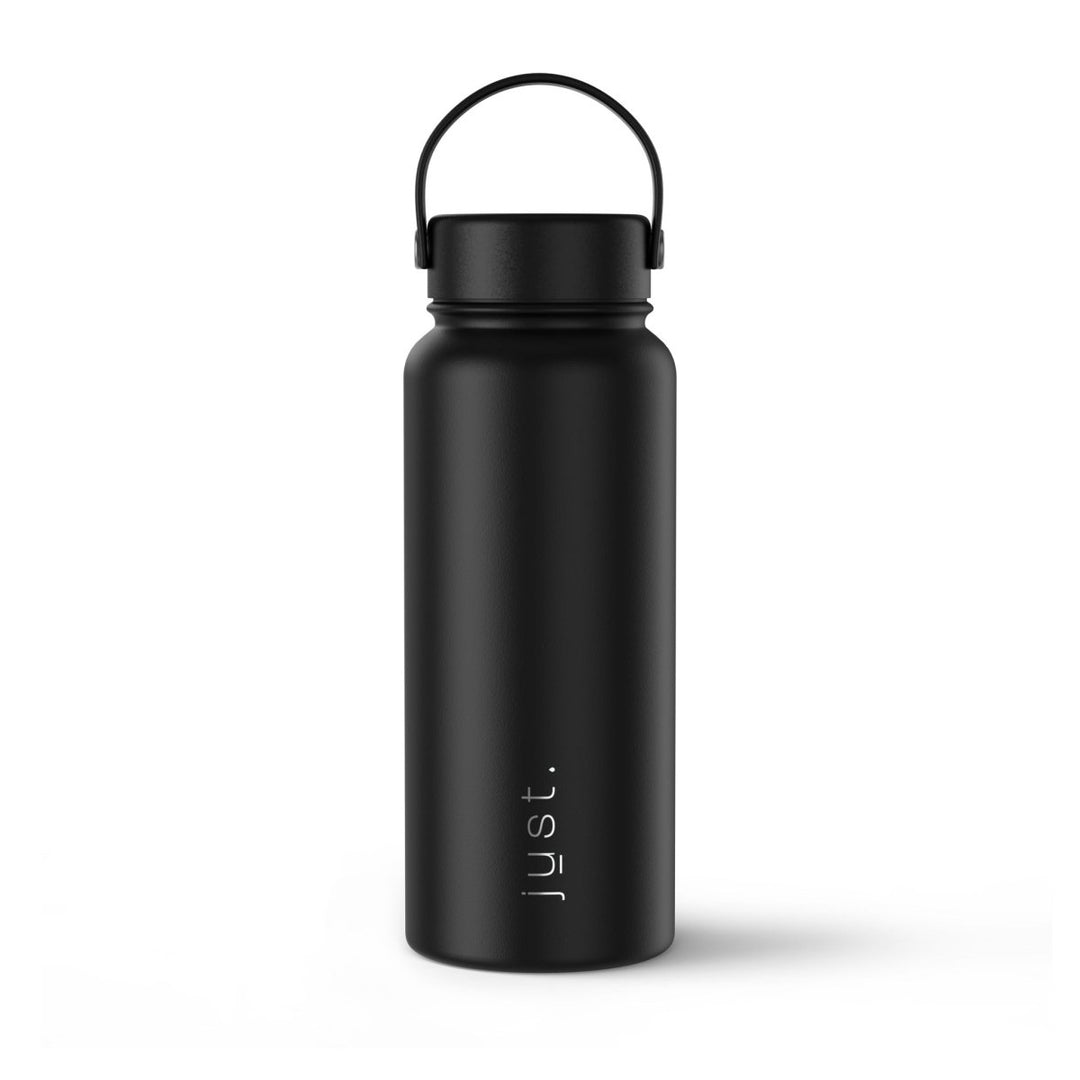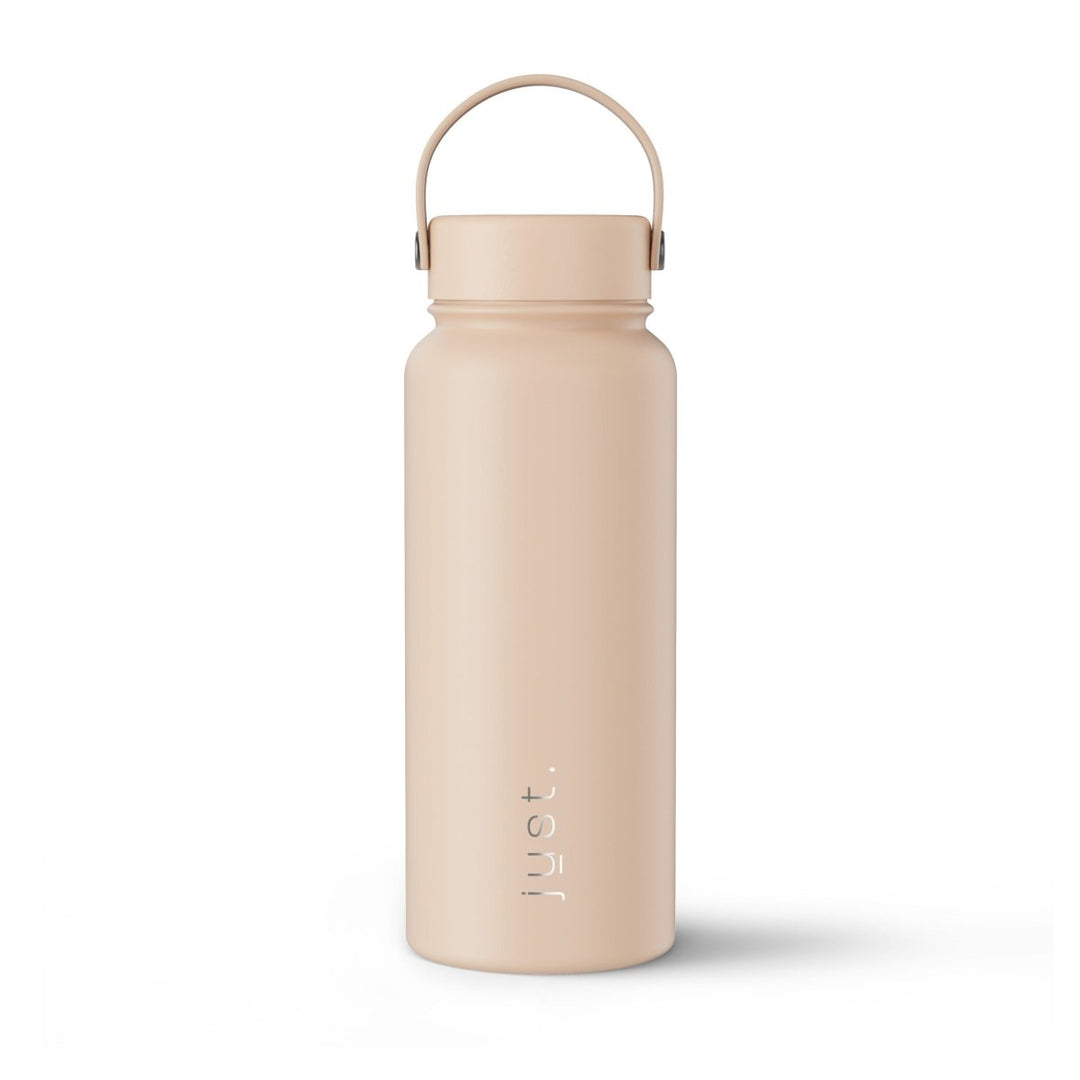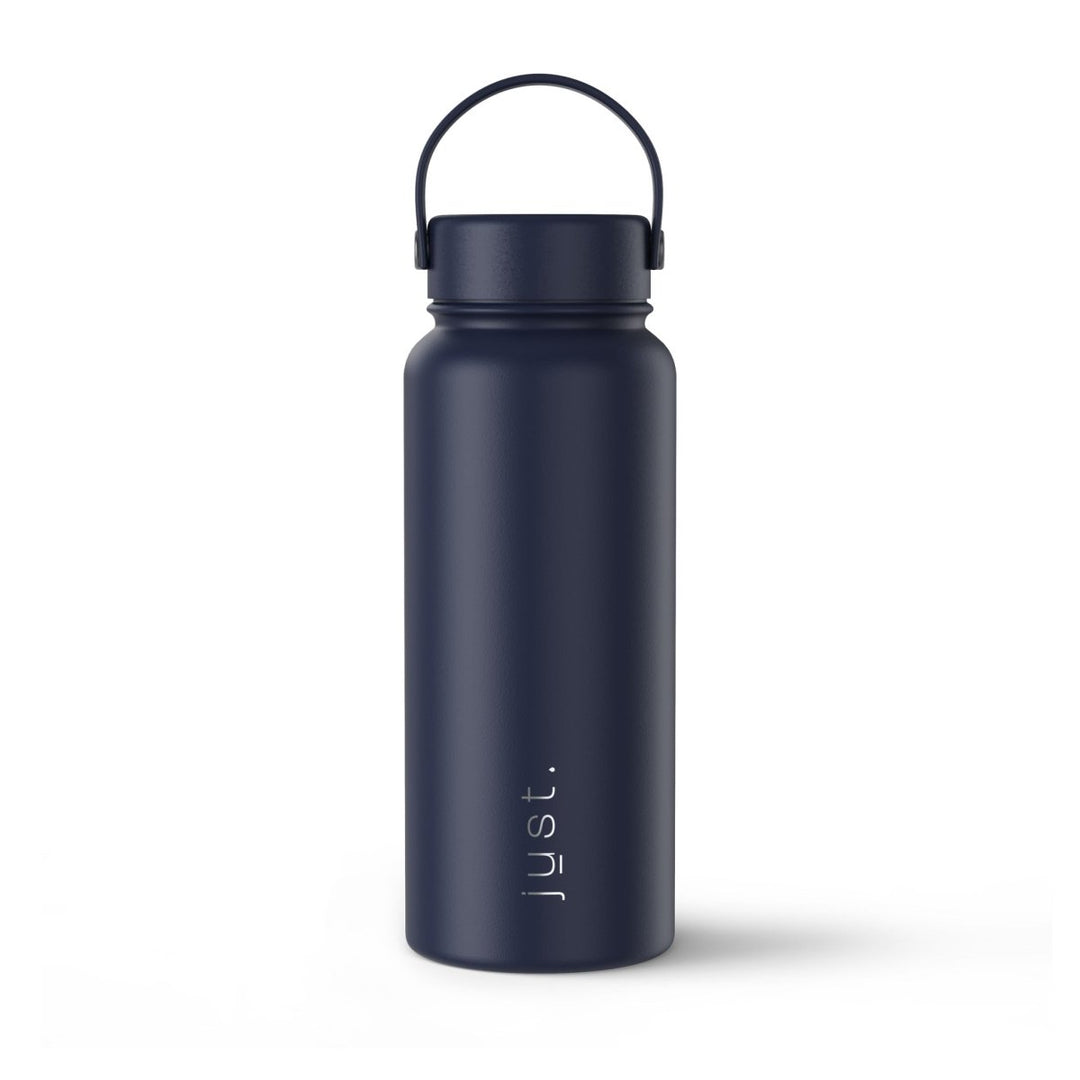Latest Update: March 2024
Can You Bring a Water Bottle on a Plane in 2024?
A Travel Essential
The thought of traveling without a trusty water bottle can be a bit daunting, especially for those who like to stay hydrated during a long trip. But can you bring a water bottle on a plane in 2024?
We're lucky here at Just Bottle that our Co-founders have a background in aviation, so we've picked their brains and put together a comprehensive guide.
The short answer is "yes" in all cases if the bottle is empty, this is because airport security and intelligence agencies are concerned about liquids, not the bottle.
If there is liquid inside the water bottle then it depends on which country you are in and whether you're flying on a domestic (flight that doesn't leave the country) or an international flight.
In most cases if the flight is domestic then there is no restriction on liquids and if it's an international flight the limit is usually 100ml (3.4oz). In this article, we'll dive more into the world of airline liquid regulations, explore the 3-1-1 rule in the USA, and provide some helpful tips for navigating the complexities of air travel with your favourite reusable bottle.
Why are there Airline Liquid Regulations anyway?
When it comes to liquids, airlines have certain rules in place to ensure the safety of all passengers and the rules are set by the airlines to make sure they abide by the laws of the countries that they fly to.
Before we dive into the details, let's take a moment to understand why these regulations exist. Airline liquid regulations are designed to prevent potential threats and ensure the safety of everyone on board.
For example, the limit of 100ml of liquid on international flights was introduced in 2006 after a potential terrorist attack was uncovered using liquid explosives. By implementing these rules, airlines can maintain a secure environment while still allowing passengers to carry essential items.
What are the General Rules when it comes to carrying a Water Bottles on a Plane?
Since you could be reading this from anywhere in the world, lets outline the general liquid rules that apply in most airports in most countries when it comes to bringing a bottle of water on board a plane. The first thing to note is that the material of the bottle does not matter, whether it's single-use plastic water bottles or stainless steel water bottles, the same rules apply.
Carry-on Baggage v Checked Luggage:
Secondly, the liquid rules and regulations only apply when you take the water bottle with you on board or in your hand luggage, checked bags don't have any security concerns when it comes to bottles, even if it's full of water.
If you are planning on brining bottled water or a reusable metal water bottle on board the plane with you (or in hand luggage), be aware of the type of flight that you are on. One thing to note is that basically all flights whether international or domestic will allow an empty water bottle of any size to be carried on board the airplane, as mentioned earlier, the issue is only with the liquid, not the actual bottle.
If in doubt, just empty the liquid from the bottle to avoid any hassle at airport security, you can always ask the cabin crew on board to fill up the water bottle for you if you don't want to purchase plastic water on board.
The water that the flight attendant will fill your bottle with is safe to drink and is know at "potable" water. If you have time, you can also refill the bottle at the airport once you clear security, as the liquid rules only apply when passing through airport security checkpoint to stop any unknown liquids from outside making their way on board the plane.
Most airports will have a water station once you're past security that you can use to fill up your bottle with to use for the rest of your trip. This will not only save you money as the airport prices for bottled water are very expensive, but will be a more sustainable choice too by cutting down on single-use plastic bottles.
Domestic v International Flight:
The good news is that most domestic flights that don't leave the country will not have a limit when it comes to the amount of liquid that you can carry on board, take the change to fill up your water bottle so that you have sufficient water for the flight. The exception to this is in the USA where the 100ml (3.4oz) liquid rule applies to both domestic and international flights.
All international flights have a 100ml (3.4 oz of water) limit when passing through the airport security gate. What most passengers don't realise is that if you choose to take liquid through an international airport, the security officer will usually need to see a label on the bottle to prove the size of the container in ml or oz.
To be safe, when planning on taking your water bottle with you in carry-on bags, just make sure it's empty. As mentioned earlier, most places will have airport water fountains available to refill your stainless steel bottle after you clear security which you can then take on board the plane.

Can I bring a Water Bottle in Checked Baggage?
If you're planning to pack your bottle in your checked bag for you to use at your destination without taking it on board, there are no rules that apply.
You can fill it with liquid or pack it empty, just remember to make sure the lid is tightened properly if it's going in your checked baggage to avoid any spills - your luggage will be thrown around whilst it gets loaded and unloaded from the aircraft, and if there is any turbulence in flight!
USA: TSA's 3-1-1 Rule Explained
The TSA's (transportation security administration) 3-1-1 rule is a general guideline that applies to flights departing from or within the United States. It states that passengers are allowed to bring liquids in containers that are 3.4 ounces (100 milliliters) or less, all placed in 1, quart-sized clear plastic bag. Each passenger is allowed 1 bag, and the bag must be able to fully close.
This rule is in place to make the security screening process more efficient, as it allows officers to quickly and easily inspect liquids without compromising safety. By limiting the size and quantity of liquids, security personnel can focus on identifying any potential threats effectively.
It's important to note that the 3-1-1 rule applies to carry-on luggage. If you're checking in your bags, you can pack larger quantities of liquids in your checked baggage. However, it's always a good idea to double-check with your airline's specific regulations to avoid any surprises at the airport.
Exceptions to the Rules
Certain essential items, such as medications and baby formula, are allowed in quantities exceeding the 100ml, 3.4-ounce limit. However, these items may be subject to additional screening or verification, to avoid delays at the security line, make sure to advice the TSA officer or security official that you're carrying baby formula or breast milk before you put it on the tray to be screened.
For medications, it's advisable to carry them in their original packaging with the prescription label. This helps airport security personnel identify the medication and ensures a smooth screening process. If you have any doubts about specific medications or medical supplies, it's best to consult with your healthcare provider or contact the airline in advance.
When it comes to baby formula, parents or guardians are allowed to bring an adequate amount for the duration of the flight. It's recommended to inform the security officers or TSA agent about the formula during the screening process to avoid any unnecessary delays. Remember, it's always better to be prepared and provide any necessary documentation to ensure a hassle-free travel experience.
It's always a good idea to check with your specific airline and destination before traveling to ensure you're aware of any unique regulations that may apply. Better safe than sorry! Additionally, some countries may have different liquid regulations, so it's essential to familiarise yourself with the rules of your destination to avoid any inconveniences.
By understanding and adhering to airline liquid regulations, you can help make the security screening process smoother for everyone involved. Remember to pack your liquids in accordance with the 3-1-1 rule, be aware of any exceptions, and always stay informed about any changes or updates to these regulations.
Preparing Your Water Bottle for Air Travel
Now that you understand the basics of airline liquid regulations, let's talk about how to prepare your trusty water bottle for air travel.
Traveling by air can be a thrilling experience, but it also requires careful planning and preparation. One essential item you'll want to have with you is a water bottle. Staying hydrated during your journey is crucial, and having a reliable water bottle by your side can make all the difference.
Choosing the Right Water Bottle
When it comes to selecting a water bottle for your journey, it's important to consider a few key factors.
Look for a bottle that is lightweight, durable, and leak-proof. After all, the last thing you want is to open your bag and find that the water has spilled!
Our advice for air travel is to avoid glass bottles, as they may break during the flight and pose a safety risk to you and your fellow passengers.
A high quality stainless steel water bottle is a great choice as they are usually come with double wall vacuum insulation to keep your water nice and cold for your entire flight.
As mentioned above, look for a stainless steel water bottle with double wall vacuum insulation. Flights can be an uncomfortable experience so knowing that you have a bottle of ice cold water or a hot cup of tea to sip from might add a little bit of comfort.
Emptying Your Bottle Before Security
Prior to reaching the security checkpoint, make sure your water bottle is completely empty if you're flight is subject to the 100ml liquid rule (mostly international flights or domestic flights within the USA), if your not sure if the liquid rule applies, just ask someone at the airport or take an empty reusable water bottle.
This is a crucial step to remember, as any liquid exceeding the allowed limit can be confiscated by airport security. If you forget to empty the bottle before you get to security, most airports will have somewhere you can do it before you put your bag through the x-ray machine.
Most airports also water fountains or bottle refill stations available after you clear security, so you can easily fill up once you're through the checks. Take advantage of these amenities to ensure you have a refreshing drink for your journey ahead.
Remember, staying hydrated is essential during air travel, especially on long flights. Due to the airplanes air conditioning system, the air on aircraft is dryer than on the ground and the cabin pressure of the cabin is set between 6000-8000ft so for your body it's the same as breathing air up at an 8000ft high mountain, so drink more water than you think you need! By choosing the right refillable water bottle and preparing it properly, you can ensure a comfortable and enjoyable journey.

Refilling Your Water Bottle at the Airport
Once you've successfully navigated the security checkpoint, it's time to refill your empty bottle for the flight ahead. Having a full water bottle at the start of your flight and making sure you finish the whole bottle is the best way to keep hydrated on your next flight.
Locating Water Refill Stations
Many airports around the world are making efforts to provide convenient and eco-friendly options for travellers to refill their water bottles. Look out for water refill stations, which are typically located near restrooms or near food and beverage outlets.
These stations often offer filtered water, ensuring that your refill is clean and safe to drink. Some airports even have designated hydration stations with multiple refill points.
Ensuring the Water is Safe to Drink
While most airport refill stations provide filtered water, it's essential to ensure the safety of your refill before taking a sip.
If you're unsure about the quality of the water, such as in developing countries, consider using a portable water purifier or carrying water purification tablets. These compact solutions can provide an extra layer of security, giving you peace of mind as you hydrate on the go.
Varying Regulations by Country
We've given you a broad overview and the rules that apply in most countries. Some countries may have stricter regulations regarding liquids, while others may have more lenient rules. It's crucial to familiarise yourself with the specific guidelines of your destination to avoid any unnecessary hassle or confiscations.
As always, check with your airline and consult online resources or contact the embassy or consulate of your destination country for the most accurate and up-to-date information.
And remember, if in doubt, just empty your water bottle somewhere before security- there's no rules stopping you taking an empty bottle on a a plane!
Tips for Staying Hydrated and Healthy on Long Flights
- Drink plenty of water before your flight to start well-hydrated and regularly sip water throughout the flight.
- Avoid excessive alcohol and caffeine, as they can contribute to dehydration.
- Consider packing a hydrating facial mist, a small moisturiser and lip balm to combat dryness.
- Take regular walks throughout the cabin and do a few stretches to keep your blood flowing and prevent fluid retention.
The Environmental Impact of Reusable Water Bottles
As travellers, we have a responsibility to consider the environmental impact of our choices. Reusable water bottles can play a significant role in reducing plastic waste in airports and beyond.
Reducing Plastic Waste in Airports
By bringing your own water bottle, you can significantly decrease the number of plastic bottles that end up in landfills or oceans. It's estimated that millions of plastic bottles are discarded in airports each year.
Be a conscious traveler and choose to refill your bottle rather than purchasing single-use plastic bottles. Every small action counts!
So, overall can you bring a water bottle on a plane? The answer is yes, for every flight if it's empty and as long as you follow the airline liquid regulations if it's full of water which is usually 100ml (3.4oz) for international flights or domestic flights in the USA. Remember that the material of the water bottle doesn't matter so there's no need to leave your favourite stainless steel reusable bottle at home, so cheers to staying hydrated and reducing plastic waste on your next adventure!



